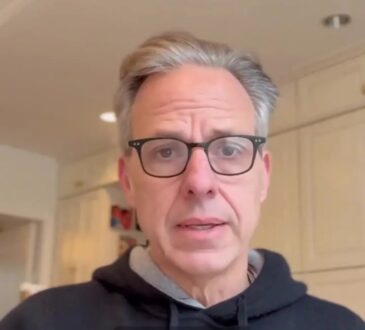
This isn’t just about my daughter. It’s about every family hoping that science can help save the people they love.
I remember one of my patients, Eric, telling me confidently, “I’m going to walk my daughter down the aisle at her wedding.” He said this even though he had just been diagnosed with colon cancer that had already spread to his liver. He was only 35. As his doctor, I wanted to believe him, but at the time, we didn’t think people with cancer that advanced could be cured.
Then I saw a new study suggesting there might be hope for patients like him through intense chemotherapy and surgery. I brought his case to a team of doctors at the hospital. Most of them thought it was a waste of time, but one surgeon said yes. Together, we gave Eric a chance.
Now, 20 years later, Eric is still alive and healthy. He has three grown children. He hasn’t had to walk any of them down the aisle yet, but he’s ready when the day comes.
Stories like Eric’s used to be rare. Not anymore. Years of careful scientific research have made what once seemed impossible a reality. Now, about one in four people with advanced colon cancer that has spread to the liver can be cured. Chemotherapy works better than ever, and we can even use the immune system to fight some cancers.
None of this happened by accident.
It happened because of government-funded research. Between 2016 and 2020, over half of the money for cancer research worldwide came from the U.S. government. This funding turned hopeful stories like Eric’s into something we see more often. It helped transform cancer from something deadly into something many people survive. It gave patients treatments that didn’t exist even a few years ago.
But now, those gains are in danger.
The Trump administration has made deep cuts to university funding, including money that supports medical research. These cuts aren’t just numbers on a page — they put real lives at risk. Losing this funding threatens the future of cancer care and so much more. It’s like selling off the future of American medicine, school by school.
Columbia University lost \$400 million. Northwestern lost \$790 million. Cornell lost \$1 billion. Harvard lost \$2.2 billion. Each cut is bigger than the last. And the damage they cause won’t be obvious right away. We won’t see a sudden disaster. What we’ll see are quiet tragedies — people who don’t get diagnosed in time, treatments that never make it to patients, lives shortened when they could’ve been saved.
The progress we’ve made in cancer care is real. The cancer death rate in the U.S. has dropped by a third since 1991. In the 1970s, only about half of kids with leukemia survived. Now, more than 90% do. We’ve also learned how to prevent some cancers or catch them early, like using sunscreen to prevent skin cancer or quitting smoking to avoid lung cancer.
But even with all that progress, we’re nowhere near finished. I know that better than anyone — because my own daughter and I live with a condition that still has no answers.
We both have hypermobile Ehlers-Danlos syndrome, or EDS. It’s a genetic disorder that affects our connective tissue — the stuff that holds our bodies together. For us, it’s like that tissue is stretched out and too loose, like an old rubber band. It affects everything: our joints hurt and pop out of place, our digestion is slow, and we overheat easily on warm days. New research shows EDS might be a lot more common than we used to think, maybe affecting 1 in 500 people.
But here’s the problem: there’s no test to diagnose it. No proven treatment. Not even agreement among doctors on how to care for people like us.
So I became my own experiment. I dug through basic science, read studies done on animals, tried to find anything that might help. I even tested out experimental treatments on myself — things like stem cell shots to tighten my ligaments, high doses of vitamin C, and hormone regimens used by bodybuilders. None of it is proven. None of it is truly safe. But when you have no map, you try whatever road you can find.
As a doctor who became a patient, I’m learning how to live with the limits this condition puts on me — and the creative ways I have to manage it.
Right when research on EDS was finally starting to gain momentum, the government slashed the NIH’s staff and budget, and cut billions in medical research that was supposed to go to universities. These cuts don’t just hurt rare diseases like EDS. They threaten research on cancer, heart disease, dementia, and countless other health problems.
And the scariest part? There’s no loud warning system for this. No breaking news alert. The damage from cutting medical research doesn’t hit all at once. It sneaks up — a diagnosis missed, a cure that never makes it out of the lab, a life that ends too soon. And once that time is lost, we can’t get it back.
As a mother, I can accept what happens to me. But I cannot accept a future where my daughter is left without answers, without options, without hope. No parent should. Our children deserve better.
This isn’t just about me. It’s not even just about my daughter. It’s about every family out there hoping that science can help them hold onto the people they love a little longer.




